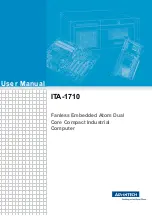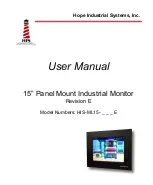
I.L. 3778A20B
Page 5
Effective 11/97
DO NOT ATTEMPT TO OPERATE THE SELECTOR
SWITCH WHEN IT IS ON THE EXTENSION RAILS.
FAILURE TO COMPLY COULD RESULT IN THE
DEVICE COMING OFF THE RAILS CAUSING BODILY
INJURY AND/OR EQUIPMENT DAMAGE.
2. Lift the device and load it on the extension rails
of the switchgear compartment with extreme care.
3. Push the device to the Test position as indicat-
ed by the crisp clicking sound of the levering
latch engaging the levering nut.
4. Using the breaker levering crank, lever the
device to the “Connected” position as indicated
by the red flag appearing in front of and under
the levering crank.
5. Unlock the lower (Selectable Terminal) test port
and test for “dead” circuit using correctly rated
neon test stick or equivalent.
6. After the circuit is checked “dead” and made
certain that it is maintained “dead”, insert the
insulated test probes into the lower test ports.
With the grounding switch open, apply the test
voltage to the cables via the insulated test
probes.
1-4.4 PHASING-OUT
1. With the device out of the switchgear enclosure,
engage the selector switch operating handle
and set the selector switch to the lower position.
Remove the handle.
DO NOT ATTEMPT TO OPERATE THE SELECTOR
SWITCH WHEN IT IS ON THE EXTENSION RAILS.
FAILURE TO COMPLY COULD RESULT IN THE
DEVICE COMING OFF THE RAILS CAUSING BODILY
INJURY AND/OR EQUIPMENT DAMAGE.
2. Lock the selector switch in the lower position
and remove key from key interlock KT1 in
Figure
4
.
3. Insert the key removed in step 2 into the key
interlock 2 in Figure
2
and open upper test
ports. Unlock the lower test ports, if padlocked.
4.
Lift the device and load it on the extension rails
of the compartment with extreme care.
5. Push the device to the Test position as indicat-
ed by crisp clicking sound of the levering latch
engaging the levering nut.
6. Using the breaker levering handle, lever the
device to the “Connected” position as indicated
by the red flag appearing in front of and under
the levering crank.
7. Check the “Phasing Out” according to the spe-
cific customer’s operating procedure.
!
CAUTION
!
CAUTION






























